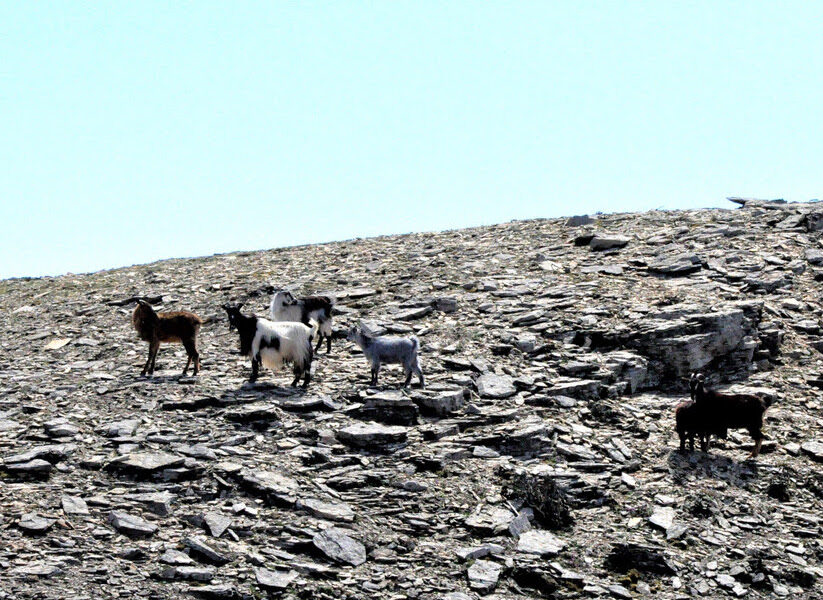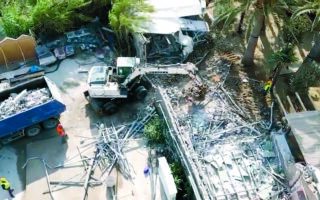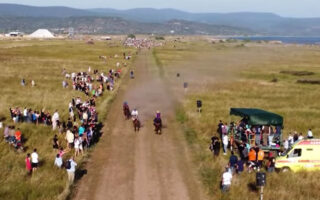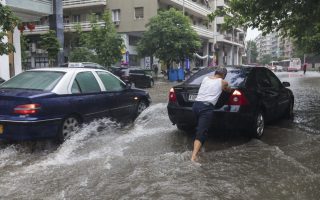Aegean islets at the mercy of goats
Uncontrolled grazing by subsidized flocks contributing to desertification, study finds

Goats are contributing to the desertification of the Aegean islets. For centuries, these islets have endured the harsh forces of the open sea and have served as vital habitats for humans under challenging circumstances. However, European Union programs have led to uncontrolled and subsidized overgrazing, resulting in a tragic situation.
Theodoros Tsimpidis, director of the Archipelagos Institute of Marine Conservation, recently returned from a field research expedition on the Aegean islets aboard the research vessel Aegean Explorer. He expresses his concern, stating: “We are witnessing a tragedy. We are destroying our own environment and disregarding centuries of experience.” The interdisciplinary Aegean Islet Conservation Project, involving Archipelagos and the John H. Daniels Faculty of Architecture, Landscape and Design at the University of Toronto, aims to address this issue.
In recent decades, numerous islets have been overrun by subsidized goats. “Subsidies are granted per goat, so some individuals have purchased a large number of goats and abandoned them on the islets. It’s a cost-effective approach that requires no fencing or supervision. These animals are left with zero care. Some goats have been left without food or water and have resorted to consuming whatever vegetation is available on the island. We have come across many deceased goats. In one instance, the goats went without food and water for five years due to the owner’s passing,” Tsimpidis explains.
There is a lack of consideration for sustainable livestock farming practices. Petros Babasikas, director of the Bachelor of Arts, Architectural Studies program (BAAS) at the Daniels Faculty, explains: “Today, many islets are being destroyed primarily due to uncontrolled livestock farming and overgrazing. By abandoning goats on these small islands, individuals have initiated decades of desertification.” The goats consume all vegetation, including roots, and dig into the soil in search of food. As a result, they leave behind barren land. The soil is vital as it accumulates nutrients and materials necessary for future growth.
According to Archipelagos, overgrazing not only leads to irreversible erosion of the Aegean islets but also disrupts the retention of nighttime moisture, known as “agiazi” in Greek. When the bushes, which goats consume, disappear, the few centimeters of productive soil on the islets erodes and ends up in the sea, leaving behind barren rocks where nothing can grow anymore.
‘We are witnessing a tragedy. We are destroying our own environment and disregarding centuries of experience’
“We have already documented dozens of islets, each with its own unique story,” says the Greek architect. The degradation of these islets has primarily occurred in the last 30-40 years, as social and economic life previously thrived on them.
“In the past, people had developed practices to conserve rainwater and humidity. Some islands had trees, while others had gardens to grow food in. Small agricultural and livestock units were developed, and their products were integrated into distribution networks on other islands. Moreover, these islets served as refuges for wildlife, including migratory birds, and some even housed historical observatories. Each islet was like a small world,” explains Babasikas.
Tsimpidis, who has been living in the Aegean for many years, never ceases to be impressed. He mentions Petrokaravo, located off the north coast of Fournoi, which is surrounded by cliffs, yet houses and an acropolis are perched on top. “How were they able to coexist harmoniously with nature and effectively conserve resources? Meanwhile today we yearn for the convenience of a supermarket right beside us,” he says.
Another islet under study is Anydros, located south of Fournoi, along with the islets of Megalos and Mikros Anthrofopas, also near Fournoi. Structures, cultivation areas, animal pens, and signs of thriving agriculture have been discovered on these islets. Researchers believe that dairy products, meat, cereals, legumes (such as the famous arid fava bean), and other goods used to be produced there.
The next step for the joint program is to establish a research station dedicated to implementing steps to combat desertification practices on one of the islets and turn things back around. This process will involve reconstructing old buildings using traditional methods and materials found on the islets, replanting local shrubs and low vegetation, and cultivating hardy local varieties of legumes and cereals.
“We are preparing to test a regeneration program on one of the islets, applying traditional water conservation methods and reconstructing buildings with roofs made of clay, seaweed and cedar. It’s also crucial to document local knowledge and traditional techniques to prevent their loss along with the passing of older craftsmen,” says Babasikas. The interdisciplinary team will include foresters, landscape architects, anthropologists, and other experts.
When asked if the trend of desertification can be reversed, Babasikas states, “Yes, but we need to start from the very depths, from the substrate, and proceed with land redistribution.”
Tsimpidis highlights that many islets in the Aegean are protected under the Natura program but criticizes the inadequate environmental protection measures in Greece. “What are the authorities doing to address and prevent the destruction of nature?” he says.





